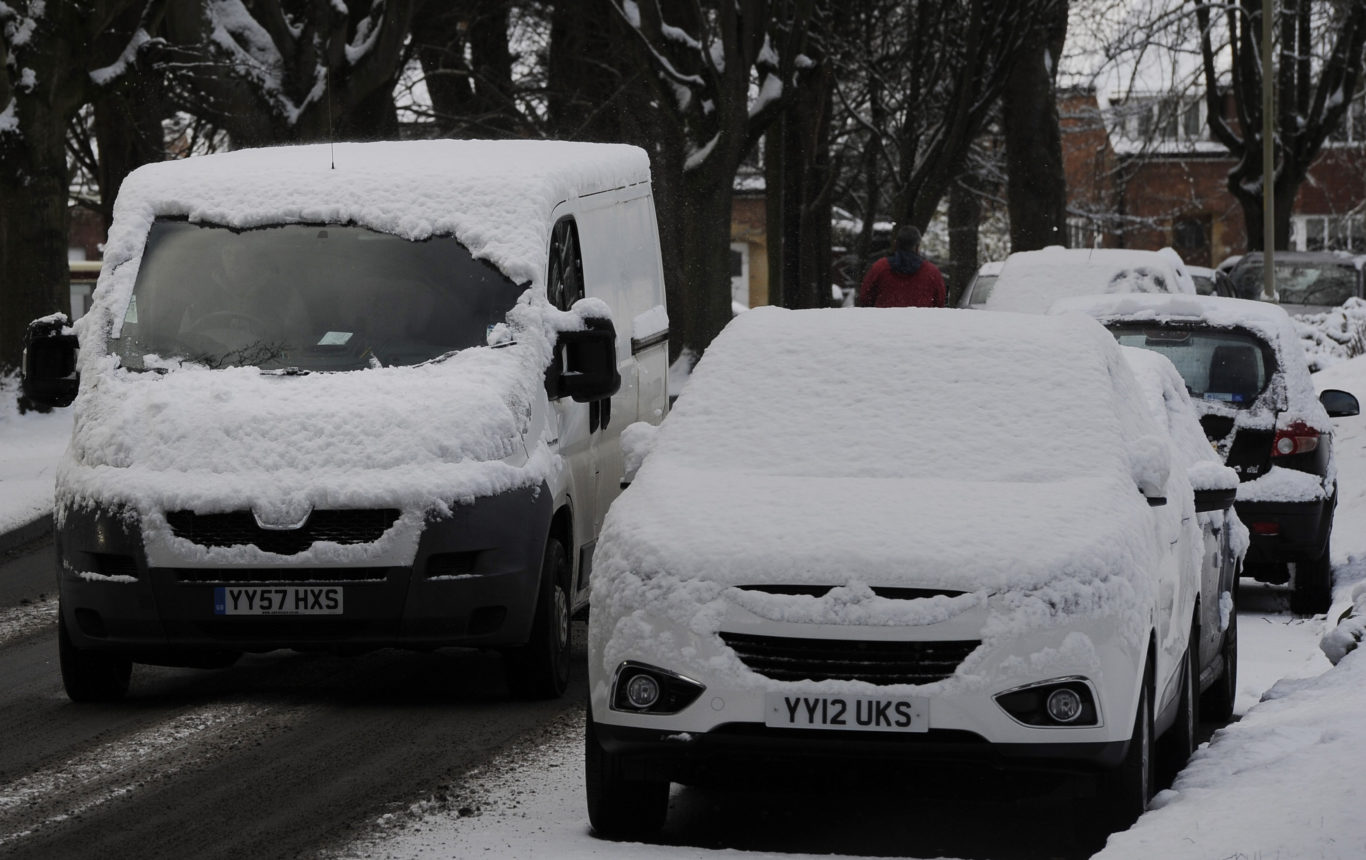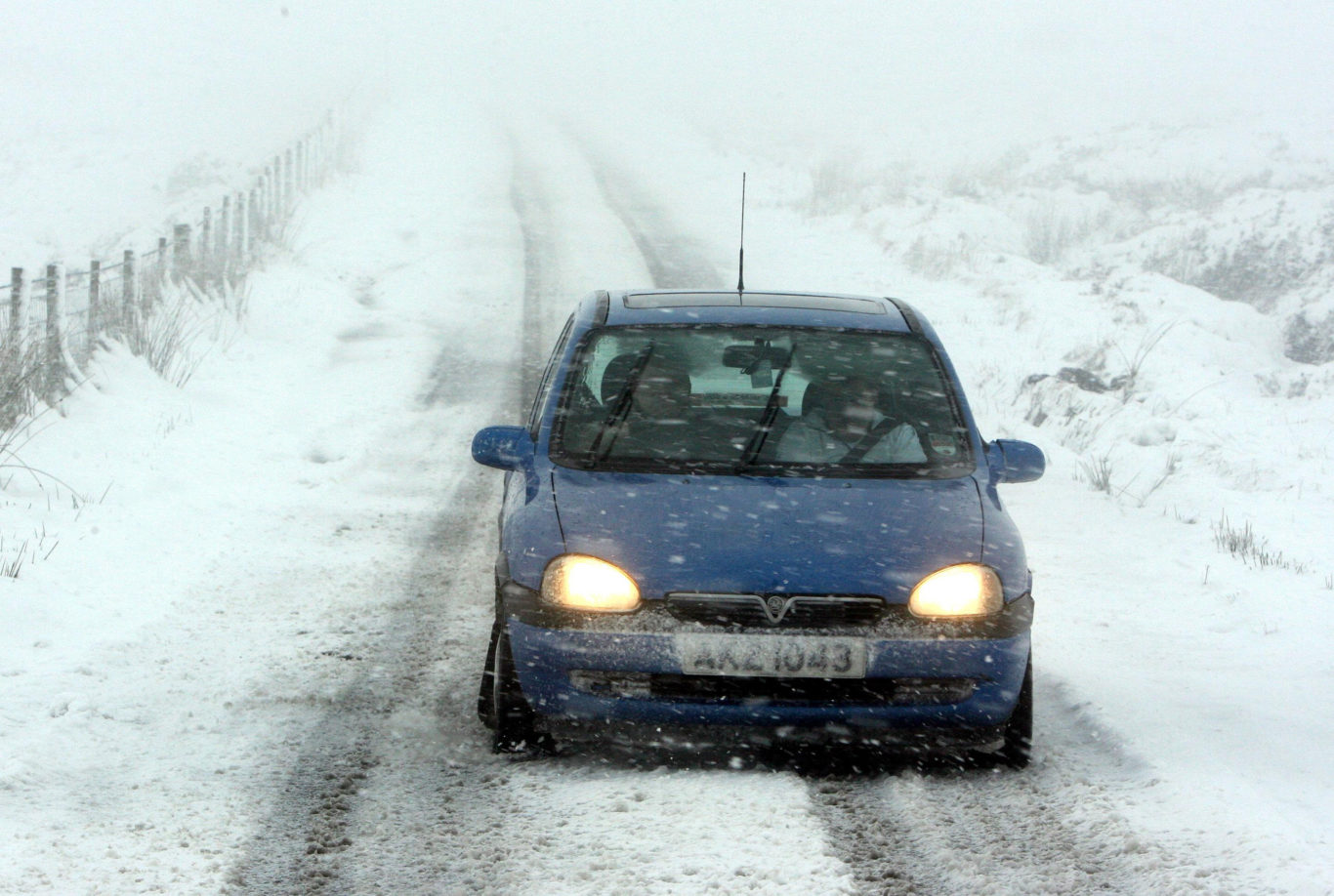
Winter is well and truly upon us now — the heating is on full blast, the constant ‘snow is coming’ fears are all over the news and the gritters are out in force to chip car paint everywhere.
All jokes aside, driving conditions at this time of year are undoubtedly the most challenging we face in the UK and failing to take on the weather without the right care and attention can leave yourself and other drivers at risk. Here are our tips for staying safe on the road over the winter months.
There’s never too much preparation

The most crucial aspect of being safe on the roads, especially in winter conditions, is preparation.
Before setting off for the day, de-icing your car is key. Frozen windows mean poor visibility, so clear as much ice as you can with a de-icing spray or scraper to clear your view.
Take an extra 5 minutes this time of year to clear your windows & windshield of snow & ice before taking off. We see you driving while looking through the one small spot you scraped clear… It’s illegal, unsafe &, frankly, a bit lazy to drive with your car in an unsafe condition pic.twitter.com/lioFeVpZXc
— Oxford Police Dept. (@OxfordOhioPD) November 27, 2018
It’s also worth packing a winter driving kit, too. This doesn’t have to be apocalypse-proof, but it’s a good idea to keep some essentials in your car such as a high-visibility jacket, snow grips for shoes, a torch, emergency snacks and a power bank for your mobile devices just in case you do end up stranded on the roads.
If you’re heading into seriously harsh conditions, it could be worth carrying a shovel to clear snow and a rug to lay under your tyres for extra grip, while tyre chains can be a useful addition for keeping on the move in thick snow.
Pace yourself

Frozen roads are a different ball game to the rest of the year and driving styles must be adapted for the conditions.
Traction is the big difference — slippery conditions mean less grip on the roads, meaning any excess input on the controls could be met with disaster.
Remember that when driving in snow and ice, you should always be accelerating and decelerating slowly and avoiding using cruise control. pic.twitter.com/V8dI2q0dto
— Haymont Auto Repair (@HaymontAuto) November 26, 2018
Acceleration, braking and steering must be done gently to avoid wheel spin, locking brakes and oversteer. Staying in a high gear can also help maximise traction.
Also remember that speed limits aren’t targets, and you should always drive at a pace safe for the conditions you’re in — even if that means travelling slower than usual.
Visibility is key

Although de-icing your car is key to maximise visibility, it’s just one piece of the puzzle when it comes to ensuring a clear view in frosty conditions.
Checking your bulbs before every journey is a quick but crucial task, and it’s worth carrying spares in case a light goes, as being seen by other motorists is just as crucial as being able to see where you’re going.
Foglights can be used if visibility is severely reduced, but remember to switch them off in traffic or brighter conditions to avoid dazzling other drivers.
Take charge of your battery
Car batteries operate less effectively in cold temperatures — far from ideal in the conditions we demand the most from them.
Keeping your battery charged is key and long drives are the best way to generate power. Short drives can be heavily draining on power, so it’s worth avoiding quick trips if possible. Turning off lights, wipers and heating when not needed is also essential to avoid excessive battery use.
In addition, it’s worth investing in jump leads in case your battery does go flat and refuses to start your car at all.
Avoid driving at all
Be aware that stopping in snow or ice can take a lot longer. To help compensate, driving slower on ice and snow can also lessen your stoppage time. When it snows, alleviate your anxiety while driving by allowing for extra time to travel to your destination. #WinterWxPrep pic.twitter.com/O0Kl864ira
— NWS Northern Indiana (@NWSIWX) November 16, 2018
The best way to stay safe in difficult driving conditions is not to get behind the wheel at all. If weather warnings are severe, it’s best to avoid trips in your car unless absolutely necessary.
If you don’t have much experience or confidence driving in difficult conditions, it may also be wise to ask a more capable family member or friend to drive if you must travel by car.
Should you get behind the wheel, always remember to take extra caution, as well as allowing more time and space for other road users who may not be as prepared for the weather.

Enjoy the convenience of having The Sunday Post delivered as a digital ePaper straight to your smartphone, tablet or computer.
Subscribe for only £5.49 a month and enjoy all the benefits of the printed paper as a digital replica.
Subscribe